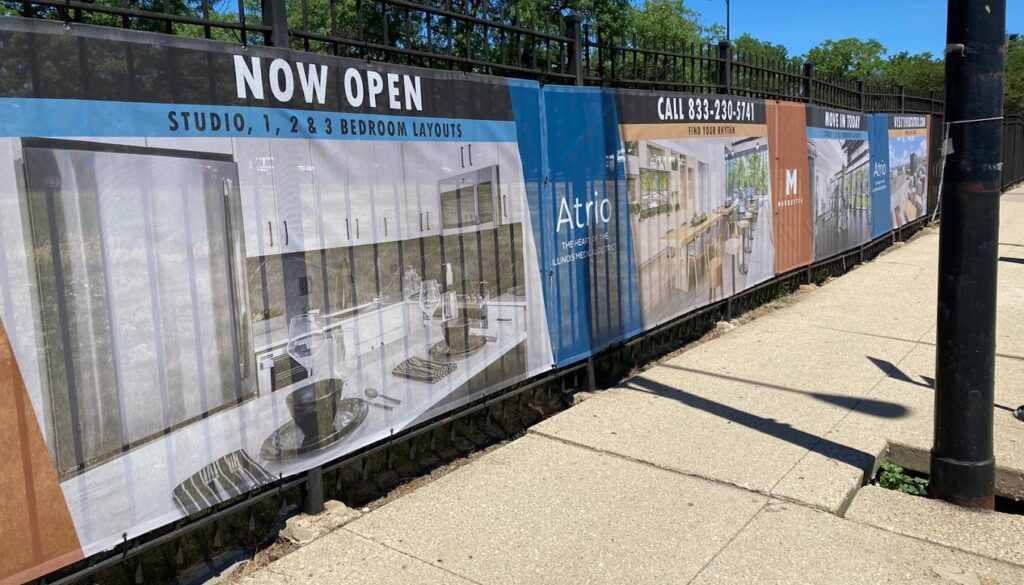Construction signage offers an opportunity for ongoing construction to advertise the development in progress. But it also serves a much more critical purpose: safety. For construction workers, safety comes first, and the best construction signage is as much a means to showcase what is being built as well as a method to keep workers and onlookers safe.
What sort of construction signage is the right choice for your business? In this blog, we examine what this type of signage needs in order to be effective, and what elevates the best type of construction signs from the rest.
Function First in Construction Signage
Construction signage is a catchall category for the varieties of signage required on a construction site. It can include general advertising, information about what is being built, safety signage, road rules, expected date of completion, tours for rentals – pretty much anything related to the project at hand.
As in the construction industry, safety is the number one thing that construction signage can offer to onlookers. Construction is one of the most dangerous industries to work in, with an average of 3.5 fatalities per 100,000 workers according to the Bureau of Labor Statistics in 2019. Construction workers are experts at what they do – in such a dangerous profession, keeping bystanders safe is of heightened importance.
Construction signs, therefore, has to meet certain criteria to be successful. This includes:
- Information: Signage indicates days when work is happening, which streets are closed to construction, or other relevant functional details. It can delineate where a construction site begins, and where non-workers cannot enter. It shows where hard-hats are necessary.
- Barriers: Signage can block pedestrians from taking certain routes or entering zones of a construction site, particularly when workers are not present.
- Concealment: Signage can block off interior views of construction projects to dissuade curiosity as well as providing less of an eyesore to passersby.
Each of these things are important to the function of construction signage, and require certain considerations not only as to their placement, but the materials and visuals used in their design. Safety signage needs to be placed clearly so that bystanders are immediately aware of the project, and typically should be notified using bright colors or large fonts. Barriers should be made of materials that can’t be bypassed – a banner, for instance, might make it easier for construction workers to put up and remove, but also can encourage trespassing.
Concealing a project can use window signage, but material choice is again important. Consider one-way window signage – the kind that allows you to look out from inside, but not from the outside in. On one hand, this can be hugely beneficial for the purposes of construction during the daytime – workers can work without being seen while getting natural light from the outside. Nighttime construction, however, will be less effective – one way signage is ineffective when there’s no sunlight and lights on inside.
There are many considerations to take regarding the functionality of construction signs, and this is arguably the most important feature it can provide. But great safety signage also allows you to advertise the construction as it is being built.
Construction Signage That Works for Workers and the Building
With safety considerations in place, construction signs can also advertise projects that are under development. It goes without being said that any construction project sparks curiosity in a neighborhood. Whether it be commercial or residential, new real estate offers opportunities for rentals, leases, or purchases.
While information about safety should be kept near the project, information about the project at large should be kept readable at a distance. It might include concept art for the building, information about what the building’s intent is, and how to get in contact about renting out space.
This kind of signage works best when it keeps viewers at a distance – so that they can see where to avoid, while also keeping them interested in what is being developed.
Bishop Image Group: Signage Solutions that Work for Everyone
Whether you’re looking for construction signs, window advertising, car wraps, or any other kind of large format printing, Bishop Image Group has the solutions you need. With nearly two decades of experience, Bishop Image Group excels at completing ambitious printing jobs in a time frame that works for you. Contact us for more information about our services.





